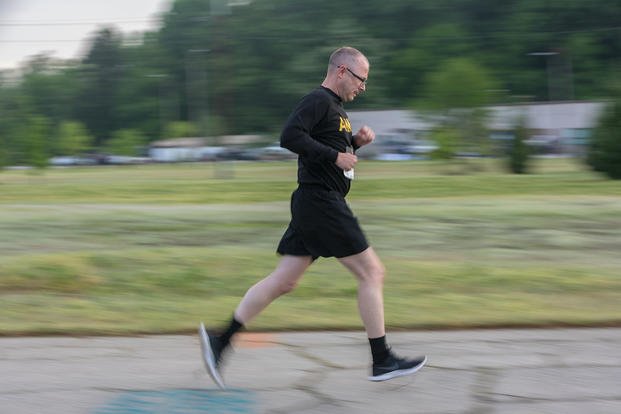Running for the first time (or ever) requires a delicate progression to avoid typical overuse injuries such as shin splints, Achilles tendinitis, knee tendinitis and foot pain (plantar fasciitis). Here is a question from a new runner starting to feel the aches and pains of running.
Hey Stew, I’ve been running for a few months now. I have not had shin splints, but my calves feel like they take most of the ground force. Could this be due to bad running form? Thanks, Tim.
Tim, this is a common trend among new runners. Typically, within the first month, the signs of pain appear in various places in the legs, depending on how much and fast you run. However, how you run, what type of running shoes you wear and the surface you are running on all matter.
Do You Run Too Much?
If you start running, you want to progress logically. Usually, that means running every other day, with as little as 10 minutes on running days. Then, every week, add 10%-15% in time or distance to that total per week. For instance, if you run 10 minutes three times a week, that is 30 minutes. In Week 2, add 10%-15% and run 33-34 minutes.
Most new runners will ignore that logical progression and overdo it by Weeks 3-4 of this new activity. See beginner running plans and be conservative with how you get started. If you progress too quickly, this could be the cause of your pain.
Do You Run Too Fast?
Sprinting is hard on the feet, calves, Achilles tendons and hamstrings, especially if you are new to running full speed and fail to warm up properly. Start slowly and get your “feet under you.” Focus on your stride, arm swings, breathing, posture, and the basic techniques when just starting, and save the very fast running for a few months into the running cycle.
As with anything, gradually increase the speed and intensity of your runs over time. This will help prevent injuries such as Achilles tendonitis, calf pain, and hamstring pulls or tears. If you do a lot of sprints and agility running, this could be the issue with your pain.
What Surface Do You Run On?
The harder the ground, the more impact forces affect your feet, shins, knees and the muscles between those joints. Avoid concrete and asphalt, if possible, especially if you are using running to help with weight loss. The bigger you are, the more impact forces you create, so find softer ground such as grass, turf, rubberized tracks, trails or sand. You will be amazed at the difference you feel in each step when you run on softer ground. If you are a bigger guy and hitting the ground hard, the impact force could be causing your pain.
What Shoes Do You Wear?
When it comes to running shoes, you get what you pay for. Finding a brand that fits you properly may require more than trying them at the store. Having a trained professional at a running shoe store is the best answer, but even then, finding a running shoe you like is a bit of trial and error. Minimalist shoes (aka barefoot running shoes) tend to cause soreness in even experienced runners, so find a shoe that is made for running the way you run.
Is How You Run an Issue?
If you run with more forefoot impact (toe running) versus midfoot strike running, your calves could be sore from that activity. If you overstride, you may have greater impact forces radiating from your heel, hurting the entire leg and its joints. If you have a shorter stride, this may force more toe-striking and cause excessive flexing of the calves. Try to find your natural stride in the middle, resulting in more of a midfoot strike.
My advice is to make sure you are warming up well and stretching the calves with both bent-knee and straight-leg stretches to get both ends of the connective tissue of the calf muscles. Any of these issues could be the culprit for your pain. Make some running assessments this week and try running every other day with nonimpact cardio days in between, which can help with both impact forces and stretching/rehabbing the calves, too.
Want to Learn More About Military Life?
Whether you’re thinking of joining the military, looking for fitness and basic training tips, or keeping up with military life and benefits, Military.com has you covered. Subscribe to Military.com to have military news, updates and resources delivered directly to your inbox.
Story Continues
Read the full article here


